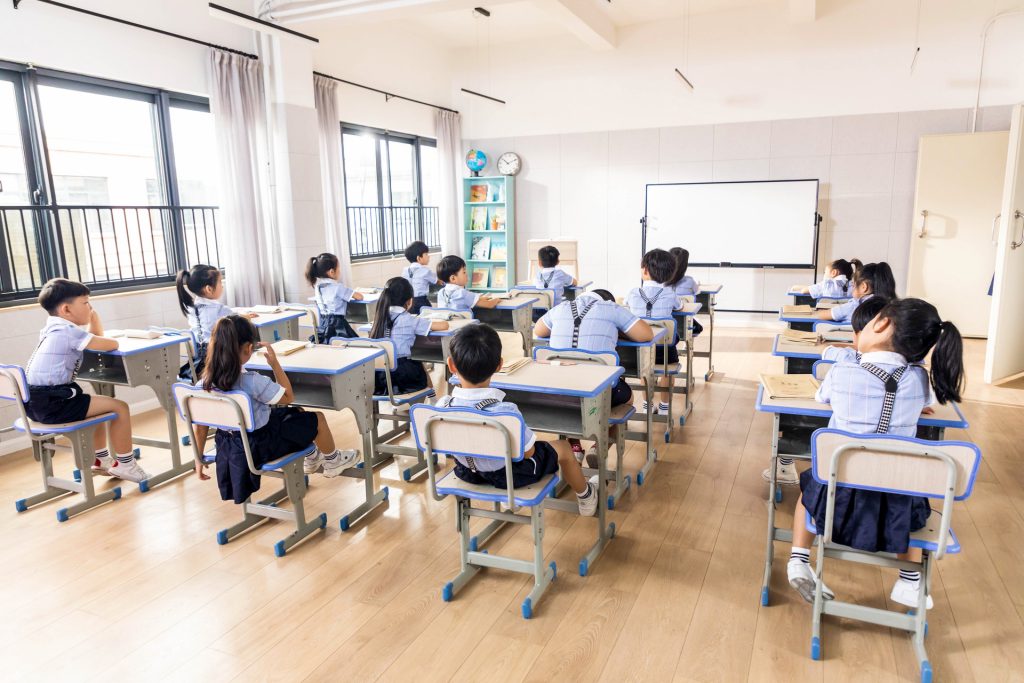Classroom management plays a crucial role in creating an effective learning environment, particularly in multicultural settings. When teaching Chinese students, educators must navigate not only linguistic differences but also cultural expectations that shape students’ behavior and attitudes toward learning. Chinese students often bring with them a high regard for education, deep respect for authority, and a strong sense of collectivism. Understanding these cultural characteristics is key to managing the classroom effectively. This article outlines a series of classroom management strategies tailored to teaching Chinese students, addressing key factors such as discipline, communication, motivation, and classroom organization.
Understanding Cultural Context
Before delving into specific strategies, it’s essential to understand the cultural background that influences Chinese students’ attitudes toward education. China has a Confucian heritage, which deeply values education, respect for authority, and social harmony. These cultural norms shape the behavior of Chinese students in a classroom setting:
- Respect for Authority: Teachers are highly respected figures in Chinese society. The traditional teacher-student relationship is hierarchical, with the teacher seen as a source of knowledge and wisdom.
- Collectivism Over Individualism: Chinese culture emphasizes the importance of group harmony and collective success. Students are often taught to prioritize the group over individual expression.
- High Academic Pressure: Chinese students often face significant pressure to perform well academically, driven by family expectations and a competitive educational system.
By recognizing these influences, teachers can better understand why Chinese students may behave differently from their Western counterparts and can adjust their classroom management strategies accordingly.
Establish Clear Expectations and Rules
Chinese students often come from highly structured classroom environments. They are typically accustomed to clear rules, structured lessons, and formal interactions. As a result, it is essential for teachers to establish clear expectations and guidelines at the beginning of the course.
- Set Rules Early: Present classroom rules and expectations on day one. Make sure these are clear, concise, and easy to understand. Providing written rules can help students review them if needed.
- Consistency: Ensure consistency in enforcing rules. Chinese students tend to respect authority figures, but inconsistency in rule enforcement can lead to confusion and frustration.
- Cultural Sensitivity in Discipline: Be mindful that Chinese students may be more sensitive to public criticism or reprimands. Disciplining students in front of their peers could lead to loss of face, which can be deeply uncomfortable for them. Instead, private conversations can be more effective for addressing behavioral issues.
Building Rapport and Mutual Respect
While Chinese students respect their teachers as authority figures, building personal rapport with them can significantly enhance classroom dynamics and engagement. Positive student-teacher relationships promote a sense of trust and mutual respect, encouraging students to participate more actively in class.
- Show Genuine Interest in Their Culture: Chinese students appreciate when teachers take the time to understand their cultural background. Acknowledging important Chinese holidays (e.g., Lunar New Year) or expressing an interest in Chinese traditions can help foster stronger connections.
- Use Praise and Positive Reinforcement: Chinese students are often motivated by praise from their teachers. Positive reinforcement, such as praising effort and improvement, can boost students’ confidence and encourage them to participate more actively.
- Personalized Feedback: Providing personalized feedback, particularly in areas where students need improvement, can demonstrate that the teacher cares about their progress. However, it’s essential to strike a balance between praise and constructive criticism to maintain motivation and prevent discouragement.
Classroom Structure and Organization
Chinese students typically respond well to structured lessons and organized environments. The following strategies can help maintain an orderly and focused classroom:
- Organize Lessons Clearly: Present lessons with clear objectives and a logical structure. Begin with a review of previous lessons and end with a summary of key points to ensure that students can follow along easily.
- Transition Signals: Use clear signals when transitioning between activities. Chinese students are used to following instructions closely, so providing explicit guidance when shifting from one activity to another can help minimize confusion.
- Time Management: Punctuality is highly valued in Chinese culture, and students are likely to appreciate a teacher who manages time effectively. Stick to the schedule and respect class time to demonstrate professionalism and respect for their commitment to learning.

Encouraging Student Participation
One of the challenges Western teachers may face when working with Chinese students is encouraging participation and active engagement. Due to their cultural background, Chinese students may be more reserved and hesitant to speak out in class, especially if they fear making mistakes or standing out from the group.
- Create a Safe Environment for Speaking Up: Encourage participation by creating a supportive and non-judgmental atmosphere. Make it clear that mistakes are a natural part of the learning process and that everyone is encouraged to share their thoughts.
- Use Small Group Discussions: Chinese students may feel more comfortable speaking up in smaller groups than in front of the entire class. Organizing small group discussions or peer activities can provide them with opportunities to practice communication without the pressure of a larger audience.
- Assign Roles in Group Work: Clearly define roles in group activities (e.g., leader, note-taker, presenter) to ensure that all students are actively involved. Assigning roles can also help prevent dominant students from taking over the discussion, allowing quieter students to participate more fully.
Dealing with Behavioral Issues
Chinese students are generally well-behaved in class, but behavioral issues may still arise. The approach to discipline should be respectful and culturally sensitive.
- Private Conversations: As mentioned earlier, public reprimands can cause a loss of face for Chinese students. If disciplinary issues arise, it’s best to address them privately rather than in front of the class.
- Model Appropriate Behavior: Teachers are seen as role models in Chinese culture. By modeling respectful, calm, and composed behavior, teachers can set the tone for how students are expected to behave in class.
Adapting to Different Learning Styles
Chinese students may be used to more traditional, teacher-centered approaches to education, such as lecture-based teaching and rote memorization. While these methods can be effective in certain contexts, they may not fully align with more interactive, student-centered teaching styles common in Western classrooms.
- Balanced Approach: Use a balanced approach that combines traditional teaching methods with more interactive techniques. For example, incorporate short lectures followed by interactive activities such as group discussions, problem-solving tasks, or hands-on projects.
- Scaffold Learning: Chinese students often excel in memorization and test preparation, but they may need more support in developing critical thinking and problem-solving skills. Use scaffolding techniques to guide students through complex tasks, providing step-by-step support as they develop new skills.
Incorporating Technology and Visual Aids
Chinese students are typically comfortable with technology, and incorporating digital tools into the classroom can enhance their learning experience.
- Interactive Tools: Use interactive tools such as online quizzes, polls, and collaborative platforms to engage students in the learning process.
- Visual Aids: Chinese students often benefit from visual aids such as charts, diagrams, and videos. Visual representation of concepts can help students understand complex ideas more easily, especially when language barriers exist.
Parental Involvement
Parents play a significant role in the education of Chinese students. Many Chinese parents have high expectations for their children’s academic success and are actively involved in their learning.
- Regular Communication: Keep parents informed about their children’s progress through regular updates. Parents can be valuable allies in reinforcing classroom rules and encouraging good study habits at home.
- Respect for Parental Expectations: Be mindful of the academic pressure that Chinese students may face from their families. While it’s important to support high academic standards, it’s equally important to help students manage stress and develop a healthy attitude toward learning.
Conclusion
Effective classroom management when teaching Chinese students requires a blend of cultural awareness, clear communication, and adaptable teaching strategies. By understanding the cultural values that shape Chinese students’ attitudes toward education, teachers can create a learning environment that fosters respect, engagement, and academic success. From setting clear expectations and building rapport to encouraging participation and addressing behavioral issues with sensitivity, these strategies can help educators create a positive and productive classroom atmosphere where Chinese students can thrive.
Key Takeaways:
- Cultural Sensitivity: Understand the cultural context of Chinese students, including their respect for authority, collectivist mindset, and academic pressure.
- Clear Expectations: Establish and consistently enforce clear classroom rules and expectations from the outset.
- Student Engagement: Encourage active participation through group work, safe spaces for speaking up, and small group discussions.
- Respectful Discipline: Address behavioral issues with respect, avoiding public reprimands, and using private conversations when necessary.
- Adaptation: Be flexible and open to adapting your teaching style to meet the learning preferences and needs of Chinese students.
By implementing these strategies, teachers can build a successful and harmonious classroom environment that supports the academic and personal growth of Chinese students.


